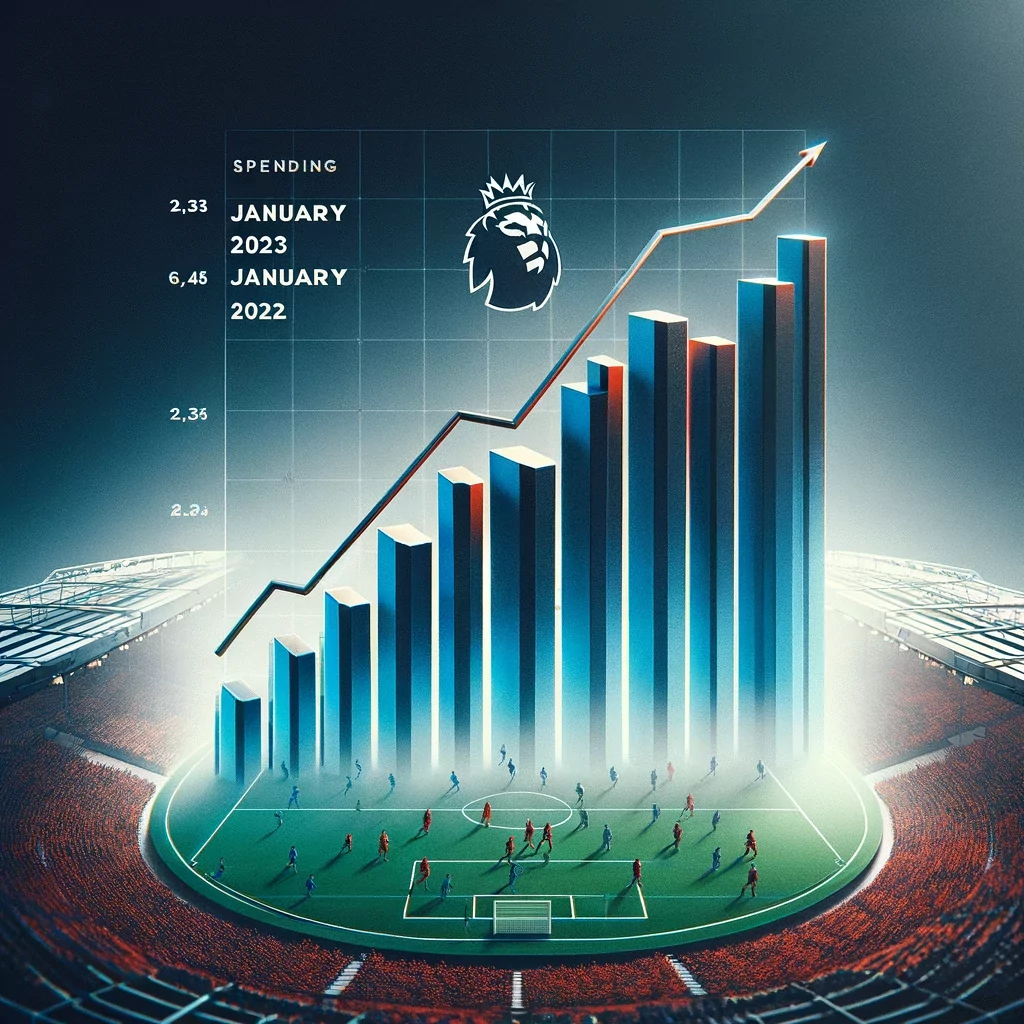At the time of writing, with just under a week to go before the January transfer window closes, Premier League clubs had spent a combined total of £46 million on permanent transfers.
Yes, forty-six million Pound Sterling.
For a sobering perspective, Premier League clubs spent a record £825 million during the January 2023 transfer window.
This January market has been woefully short on excitement, lacking the character transfer windows often derive from long-running transfer sagas.
It will require an unlikely flurry of big-money transfers in the days ahead for the current window to even begin to warrant credible comparison with the bullish January 2023 market and the windows before it.
The deals
The £46 million to date represents the combined spend on five transfers by four clubs, with the £25 million Tottenham paid Genoa for Romanian defender Radu Dragusin the pick of the deals.
So far Brighton hold the distinction of being the only club to have paid a transfer fee for more than one player. The club parted with a reported £7.9 million to secure the services of Valentin Barco from Boca Juniors and £2.5m for Adrian Mazilu from Romanian outfit Farul Constanta. The latter was immediately sent out on loan to Dutch club Vitesse for the remainder of the season.
Aston Villa stumped up £6.5 million to prise Kosta Nedeljkovic away from Red Star Belgrade, making Unai Emery’s title hopefuls the third biggest spenders of the window to date.
Brentford, boosted by the return of star striker Ivan Toney from a eight-month ban, bolstered their squad further with the acquisition of Yunus Emre Konak from Turkish Super League side Sivasspor in a deal worth £3.9 million.
Slim pickings, indeed.
Spare a thought for football agents who earn their keep from brokering transfer deals?
Well, many of them are still counting their rich pickings from the record £2.36 billion Premier League clubs spent during the summer transfer window.
The summer and January transfer windows are complementary but not comparable. It is from 1 July to 31 August that Premier League clubs conduct the bulk of their transfer business.
The January market generally tends to be calmer, with intermittent outbursts of big-money deals. The consensus is that there is very limited value in the secondary market, while most clubs are loathe to sell their prized assets in the middle of the season.
The FFP factor
Several clubs either have Financial Fair Play charges hanging over their heads or are trying to balance the books to avoid falling foul of FFP regulations.
Hamstrung by the FFP, clubs must sell before they can buy. Yet, there appears to be a shortage of takers for those players; clubs may be willing to offload on permanent transfers, the surplus to requirements.
Consequently, loan deals tend to dominate the January market. The current window is no exception.
Manchester United duo Jadon Sancho and Donny van de Beek’s loan moves to Borussia Dortmund and Eintracht Frankfurt, respectively, and Timo Werner’s switch from Red Bull Leipzig to Tottenham are some of the window’s high-profile loan deals.
The Saudi factor
The Saudi Pro League’s unprecedented raid on the European transfer market last summer had a significant knock-on effect.
The Saudi spending spree pumped some money into European clubs’ transfer kitties, which money clubs in turn used to fund their own player recruitment.
After the frenetic summer shopping, Saudi clubs have kept their chequebooks closed this January. Renan Lodi’s move from Marseille to Al Hilal for £21.7 million was the biggest and only transfer of the January window at the time of this writing.
After the exhilaration of last summer’s brisk trading, it seems clubs have decided to take a collective breather this January window.






